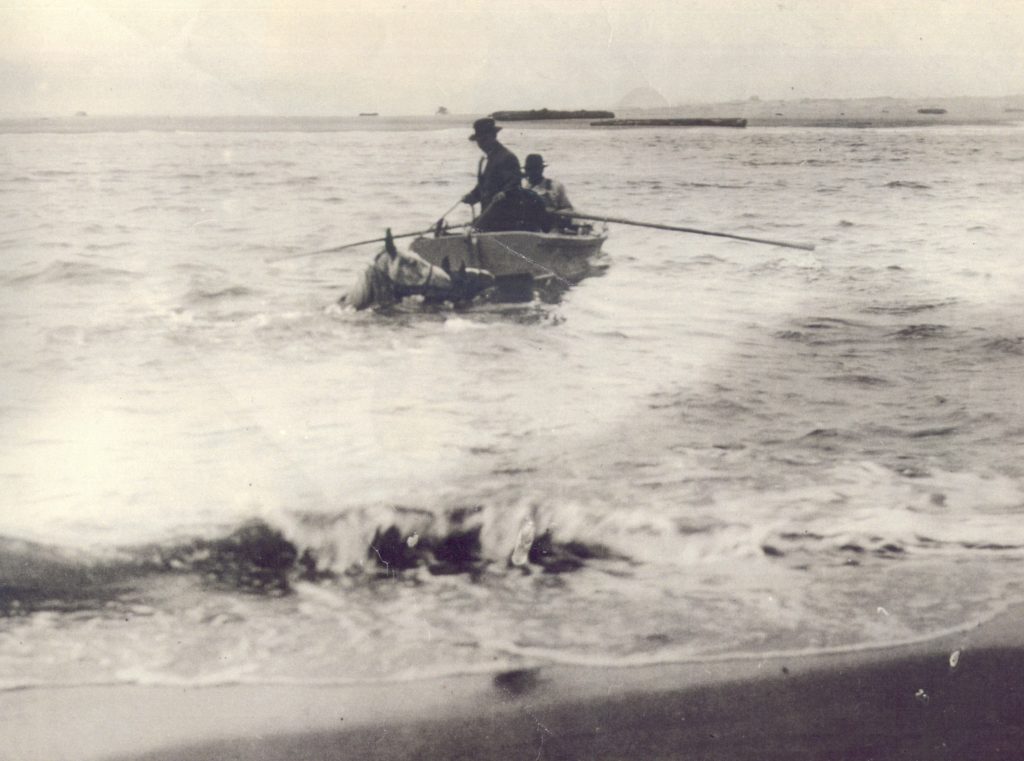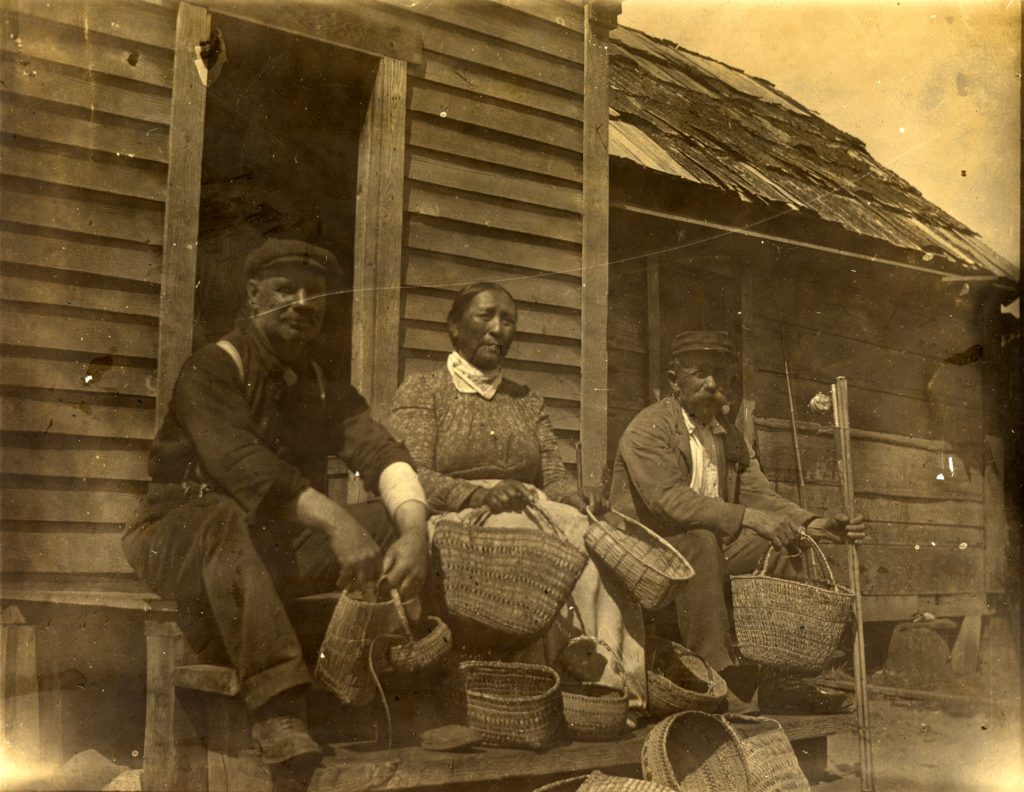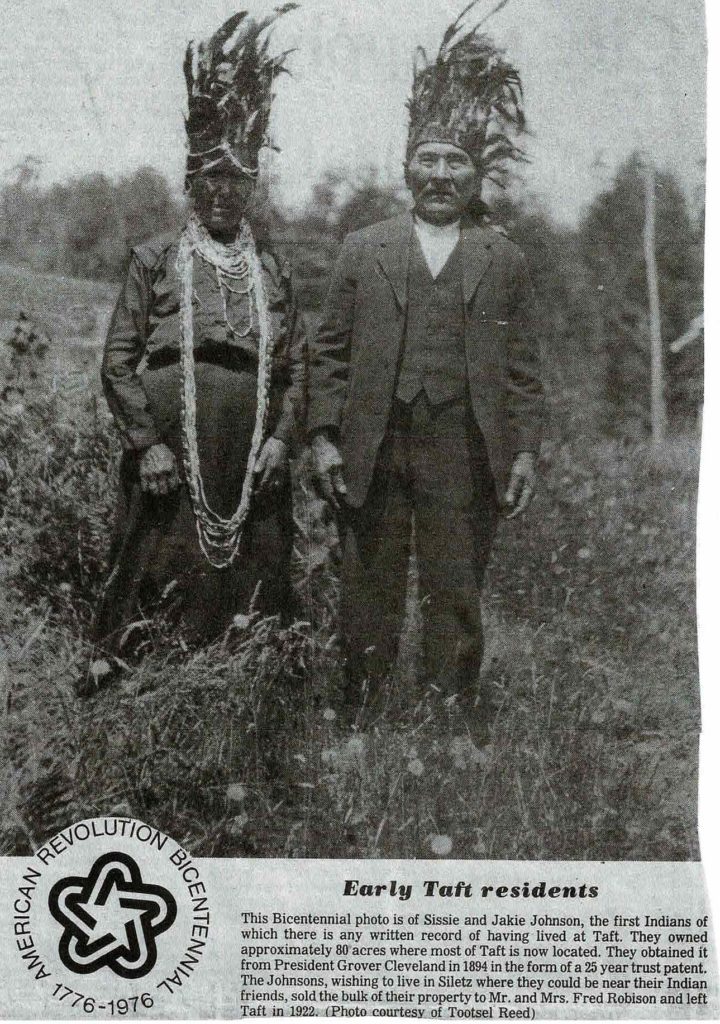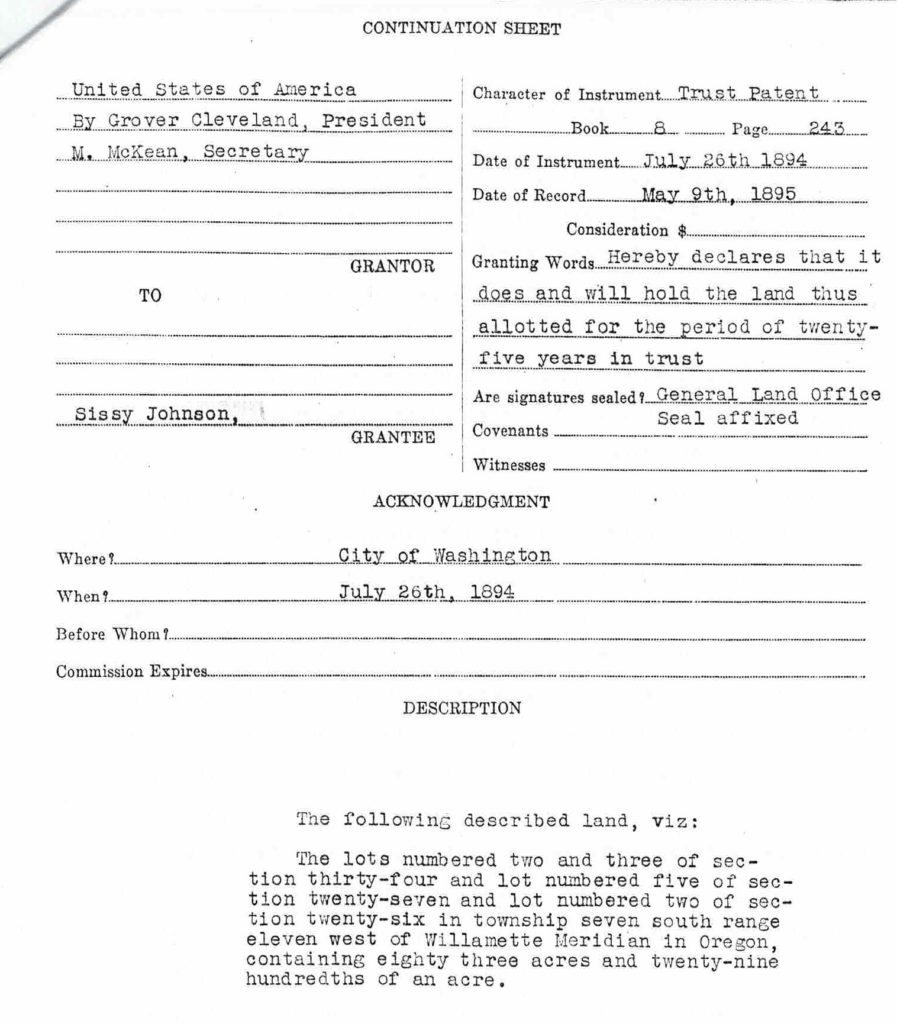
Sophia “Sissy” Johnson was born in 1859, the daughter of Onatta, the great chief of the Tututni Tribe. Her tribe was one of the largest to be forced to the Coast Reservation the same year she was born. In 1887, the Dawes Act dissolved the Coast Reservation and tribal sovereignty and each tribal member was “allotted” 80 acres of land (the concept of land ownership was foreign to native people, and thus dismissed by many). Sissy and her husband Jakie’s combined allotments included most of the land that would become known as Taft.
They built a home and lived an isolated life until homesteaders began moving to the area in the early 20th century. The Johnsons taught settlers to fish and clam, how to use herbal medicine, delivered their babies, and ferried their horses across the bay. The donors of this basket, the Dodson family (see Julia Dodson’s diary), were early neighbors of the Johnsons and received this basket in the 1910s from Sissy.
Below is a photo of Sissy and Jakie Johnson:

Jakie Johnson guides horses across Siletz Bay in the early 1900s:

Sissy and Jakie, ca. 1908:

Below, Rosa Johnson (Sissy’s mother in-law) at the Johnson residence in 1904 with two unknown men. Note the handwoven baskets in the photo:

Sissy and Jakie in a bicentennial article in 1976:

Below is the Trust Patent for Sissy’s land:

Click the image below to learn about the history of the Confederated Tribes of Siletz Indians:

This basket represents the Johnsons and how they exemplified the spirit of independence, helpfulness and harmony with nature so valued by native people. Sissy was respected and appreciated for her knowledge, traditions and values.











